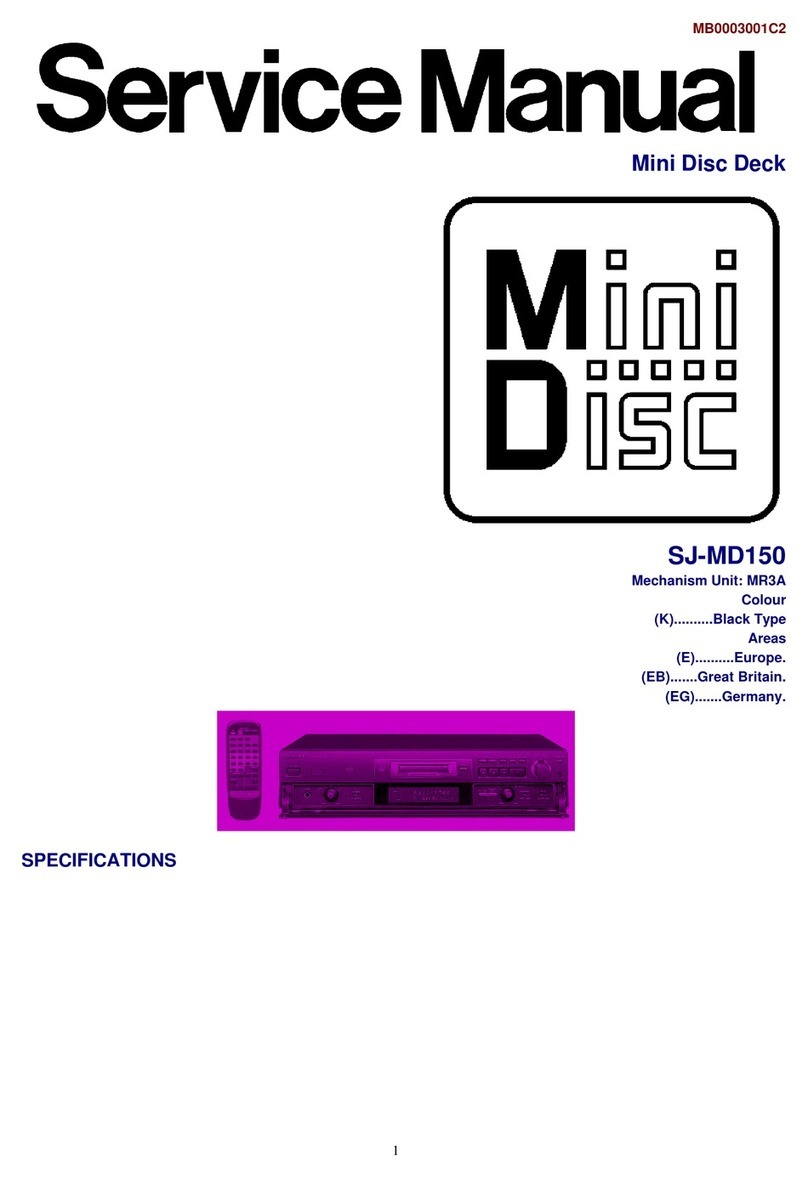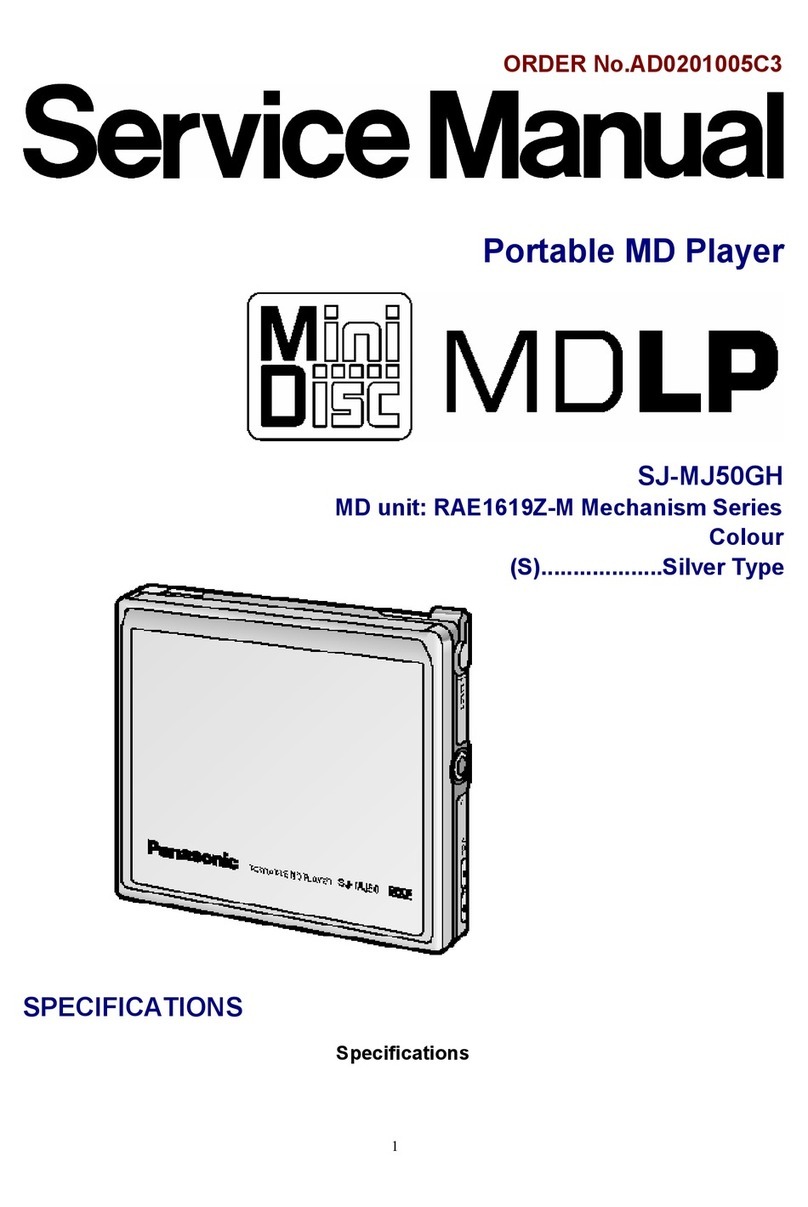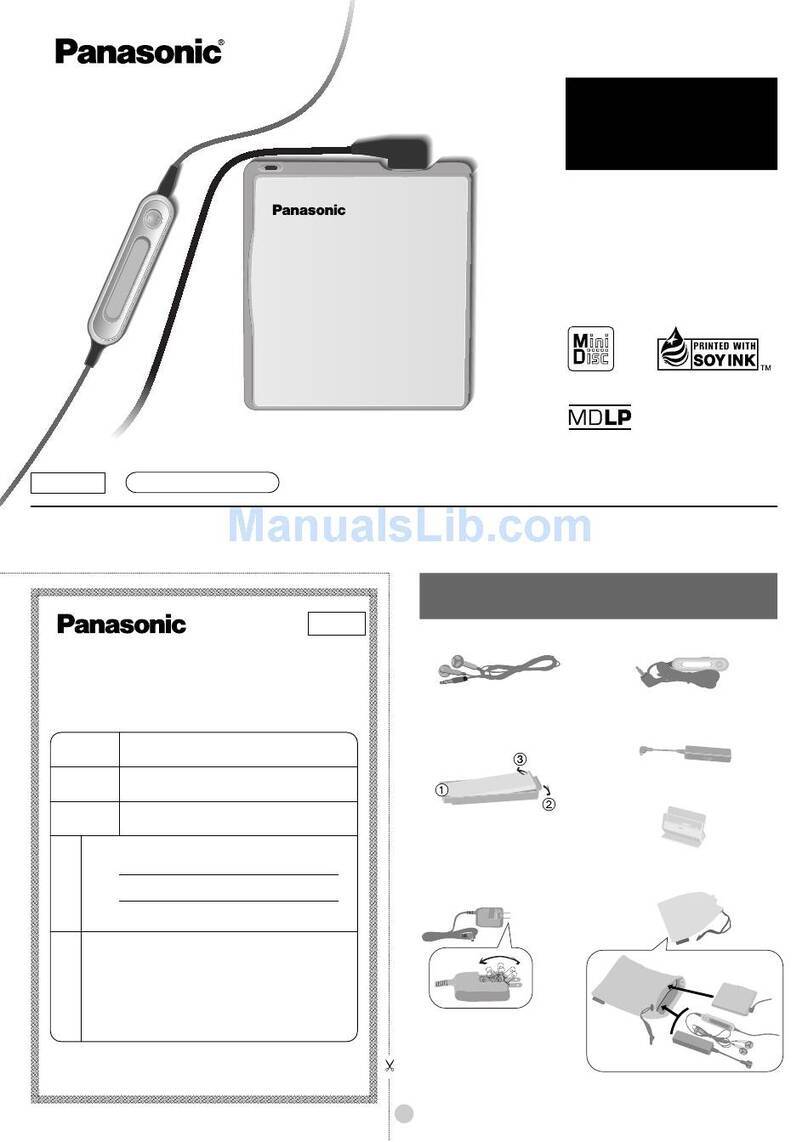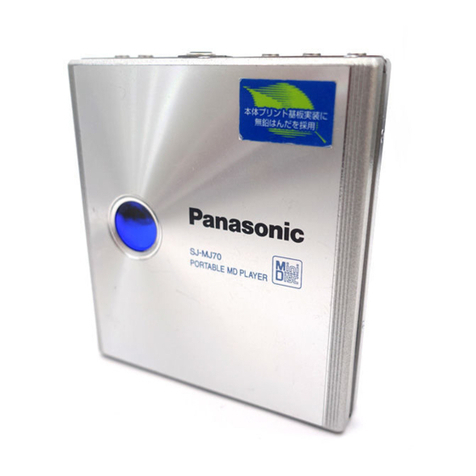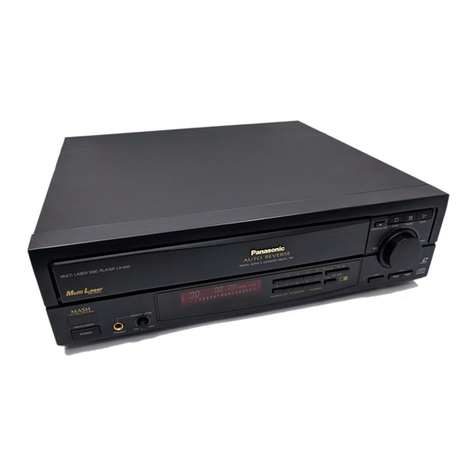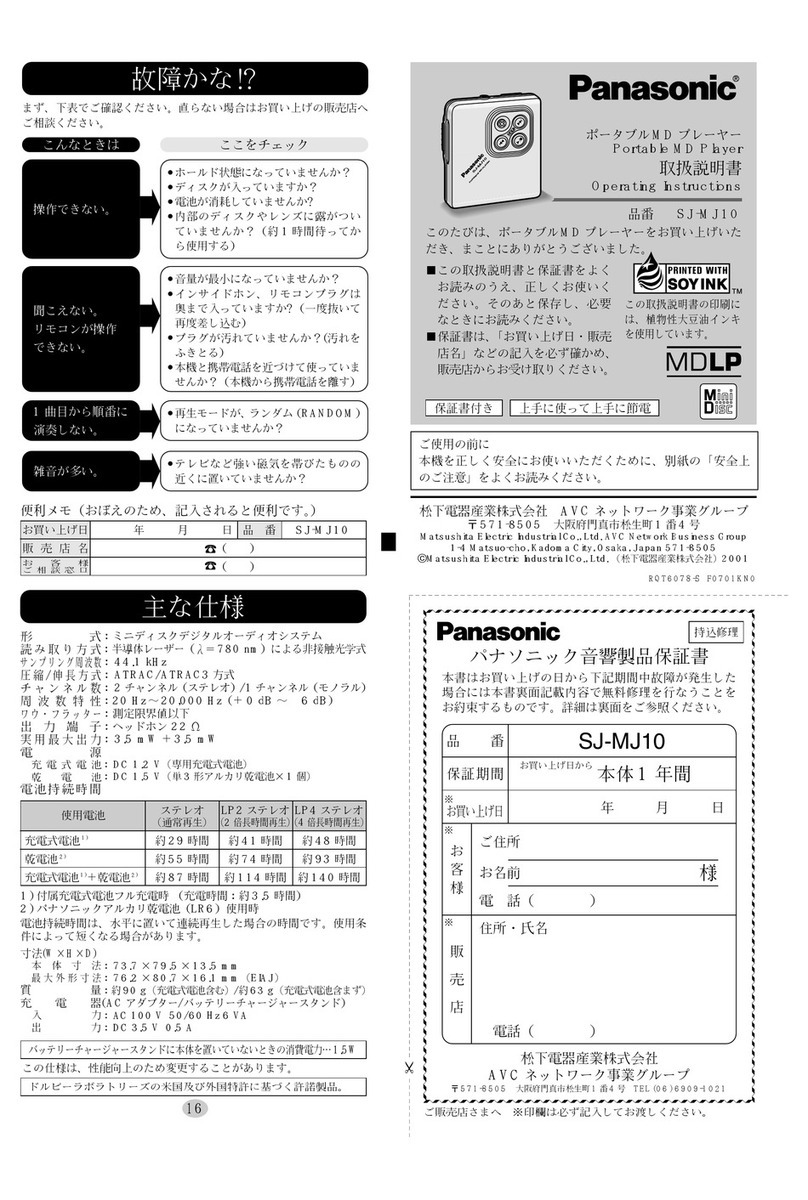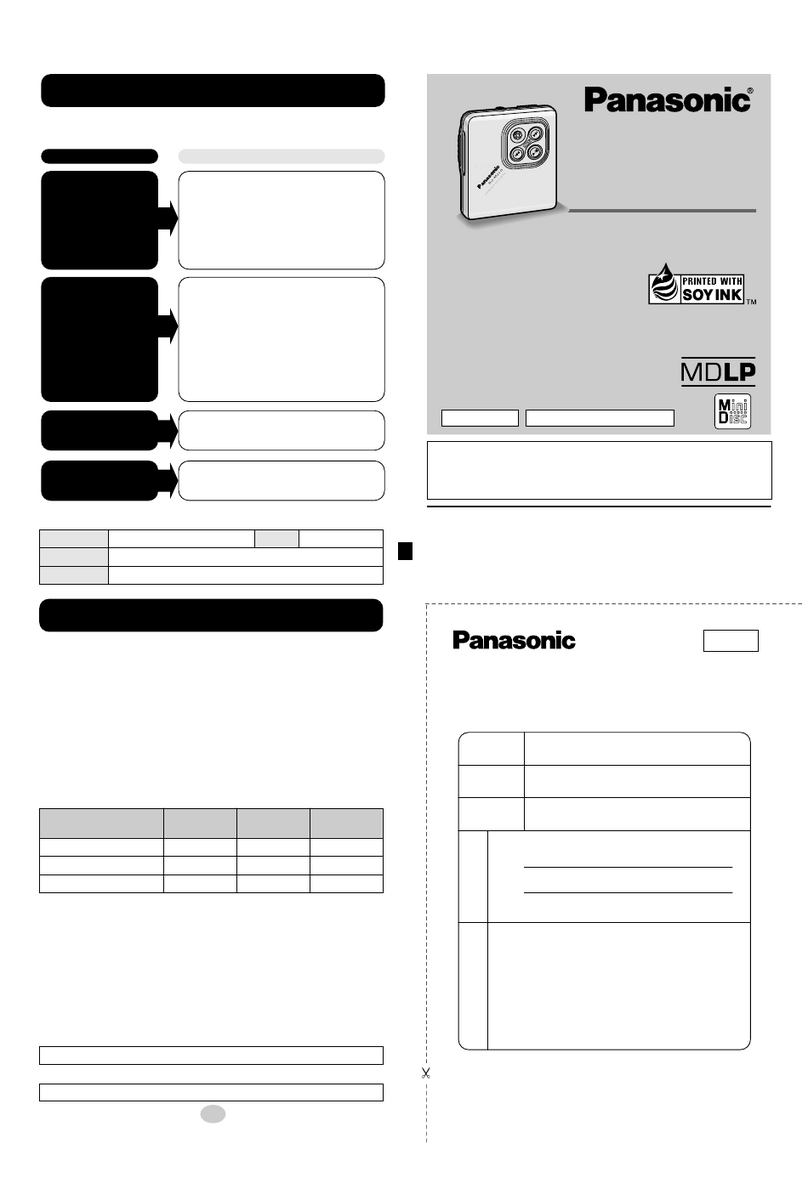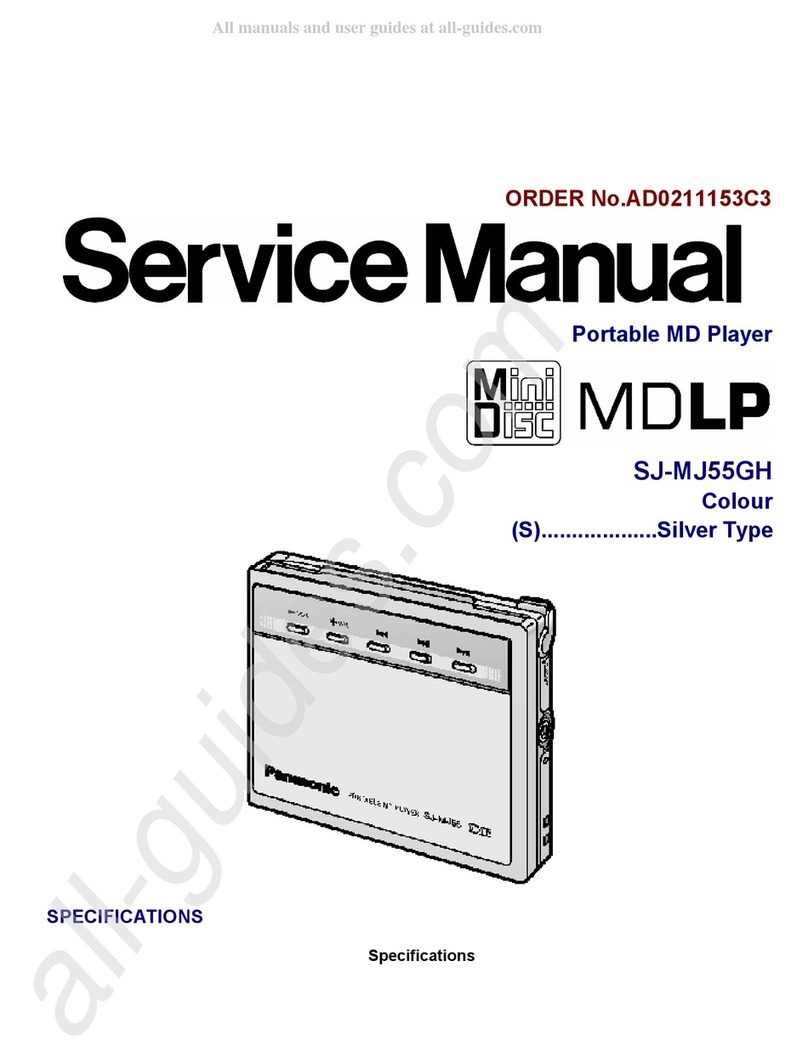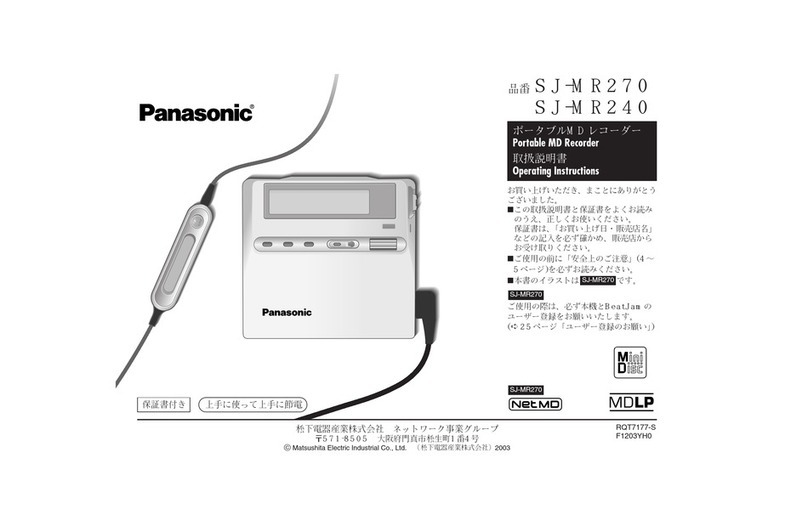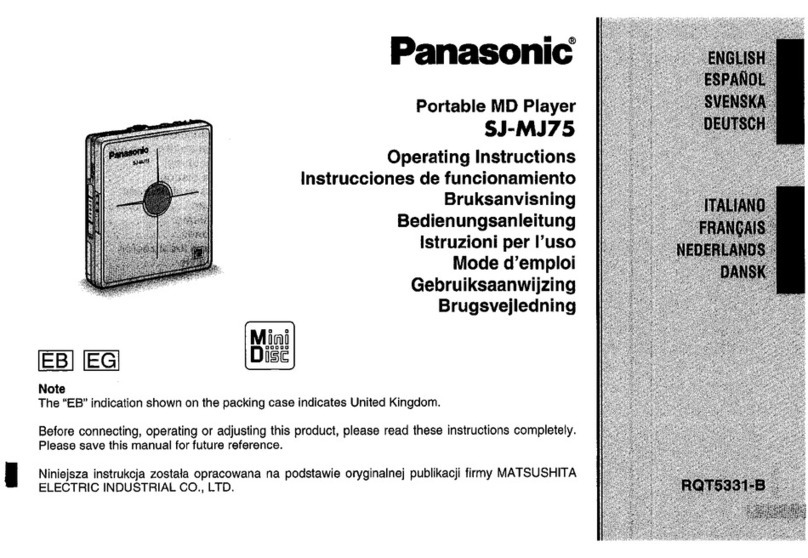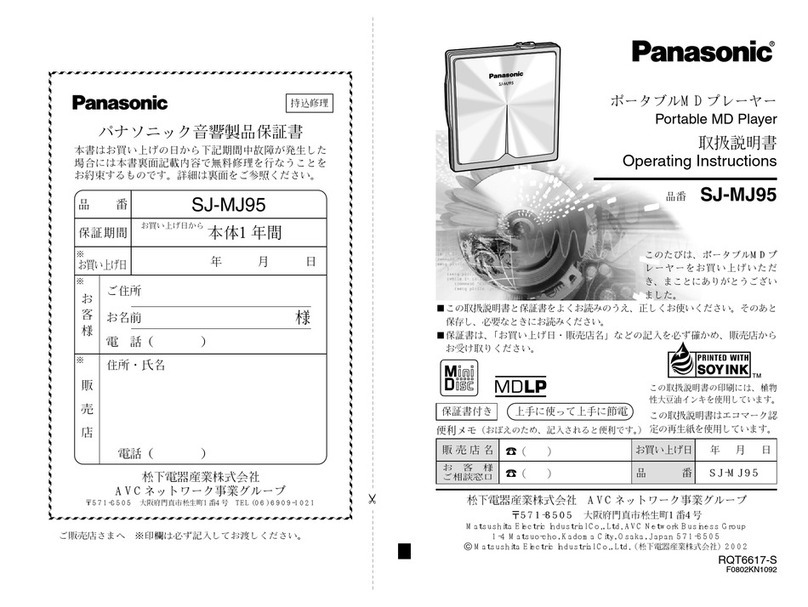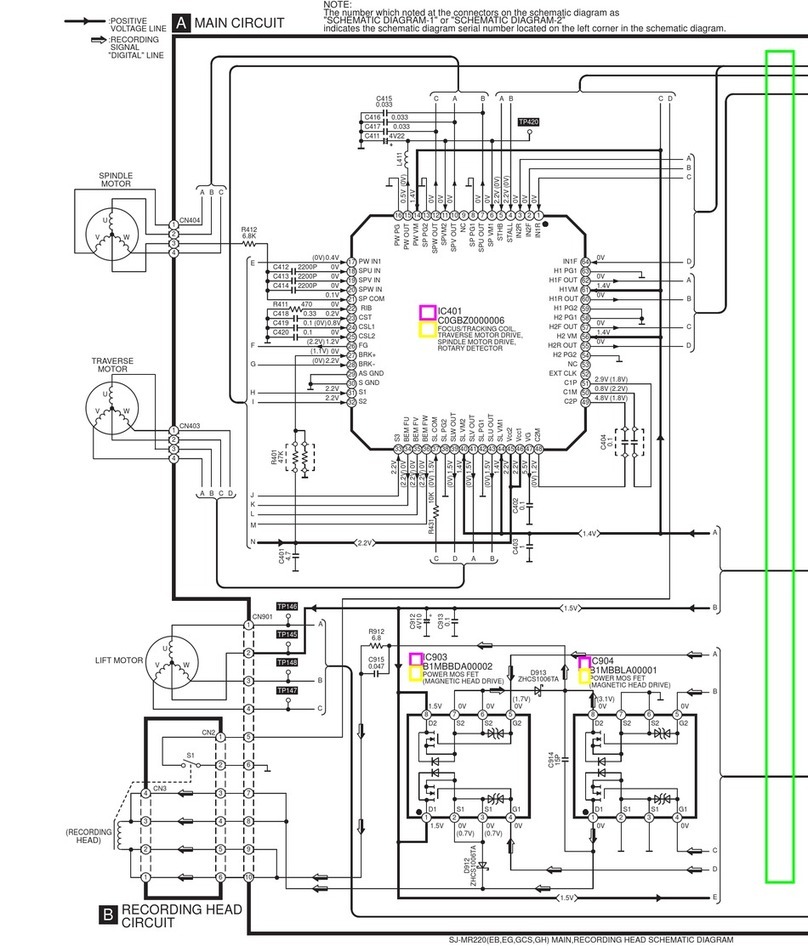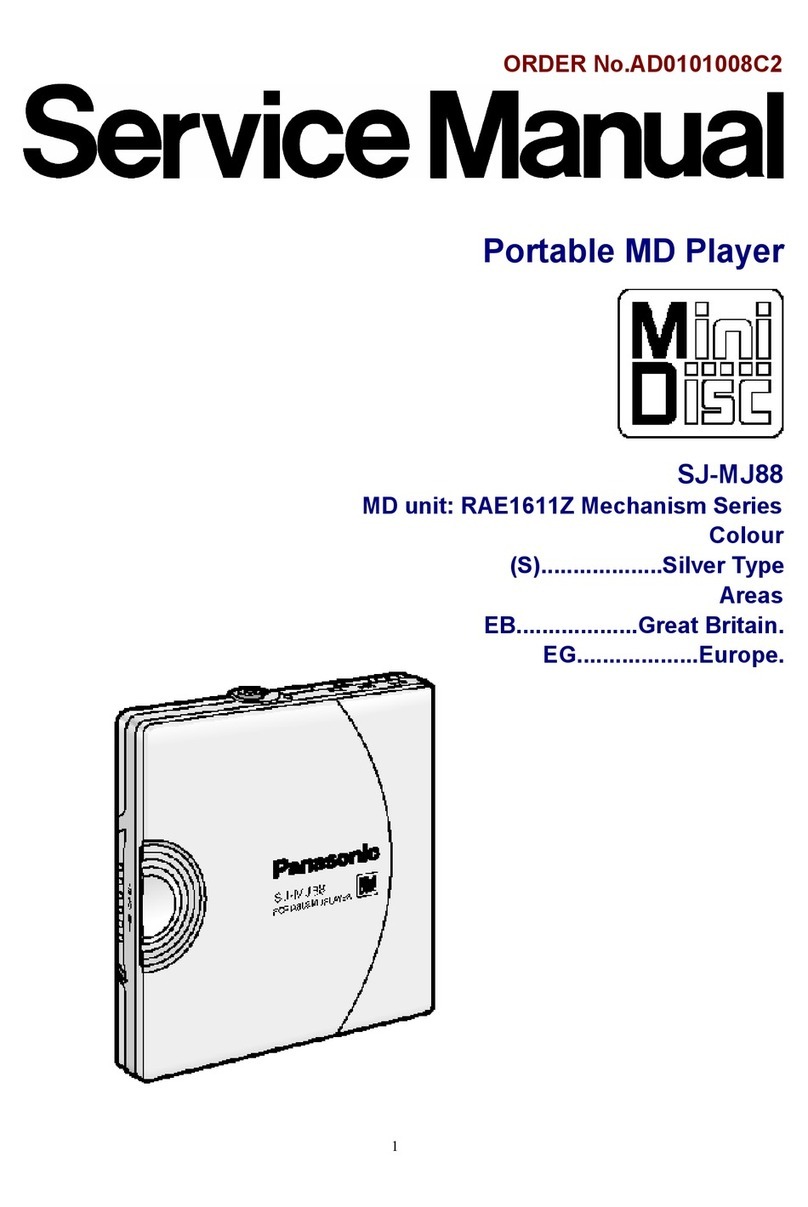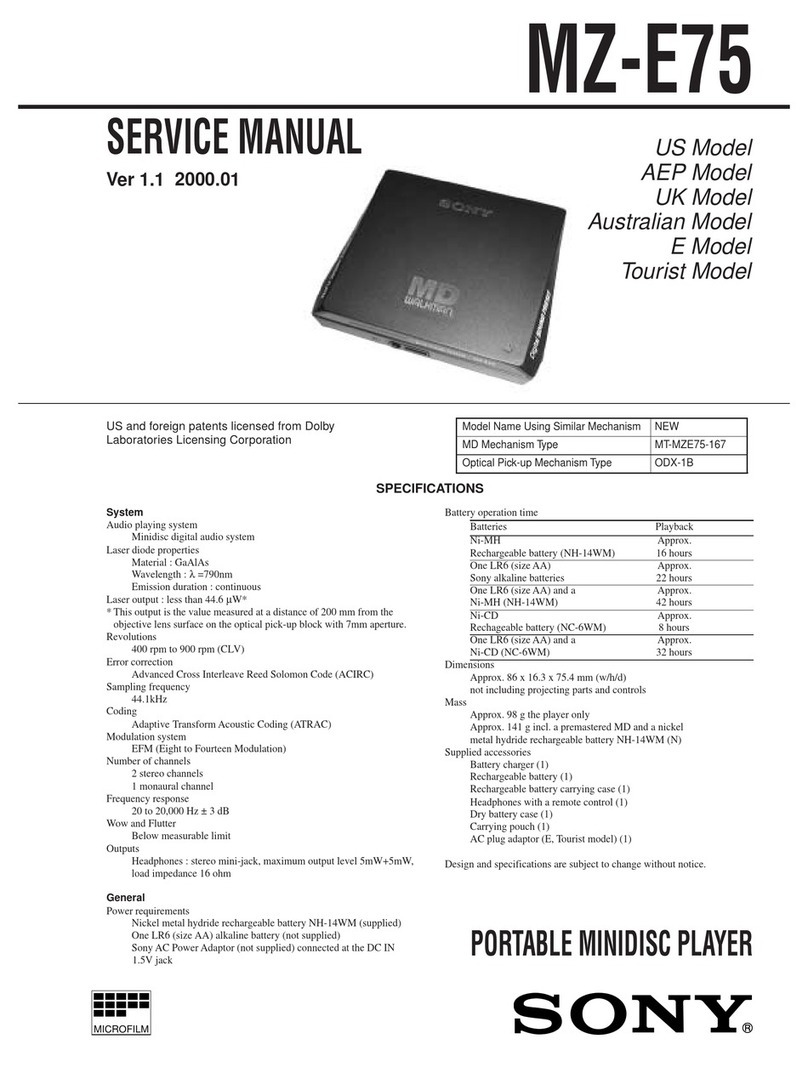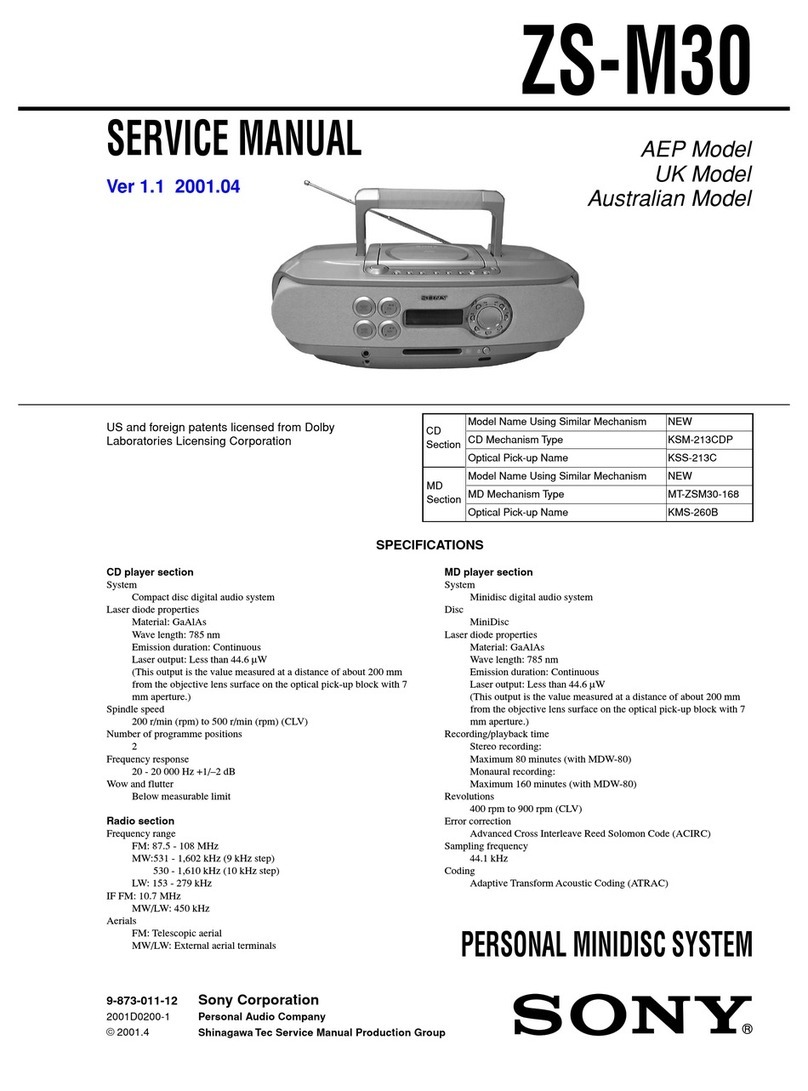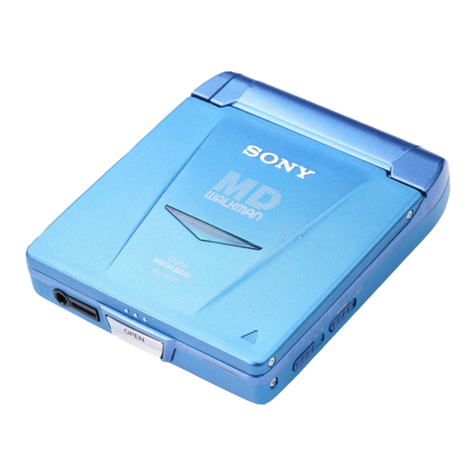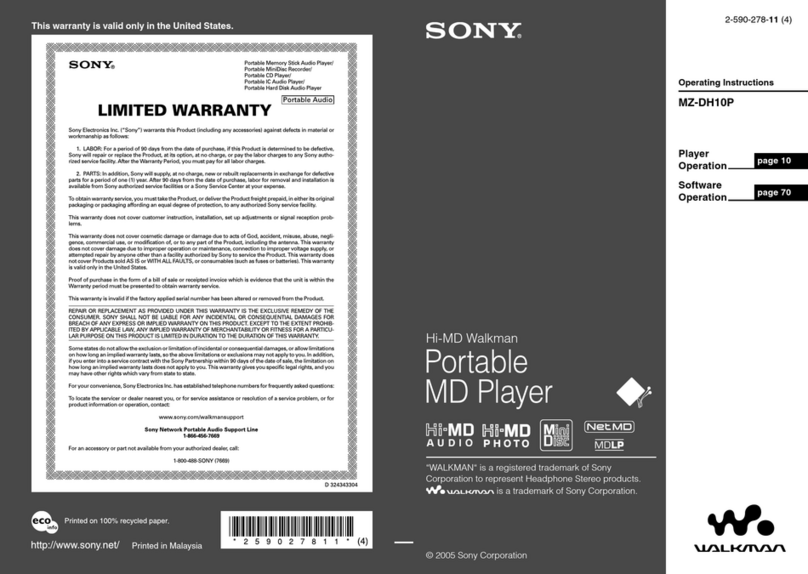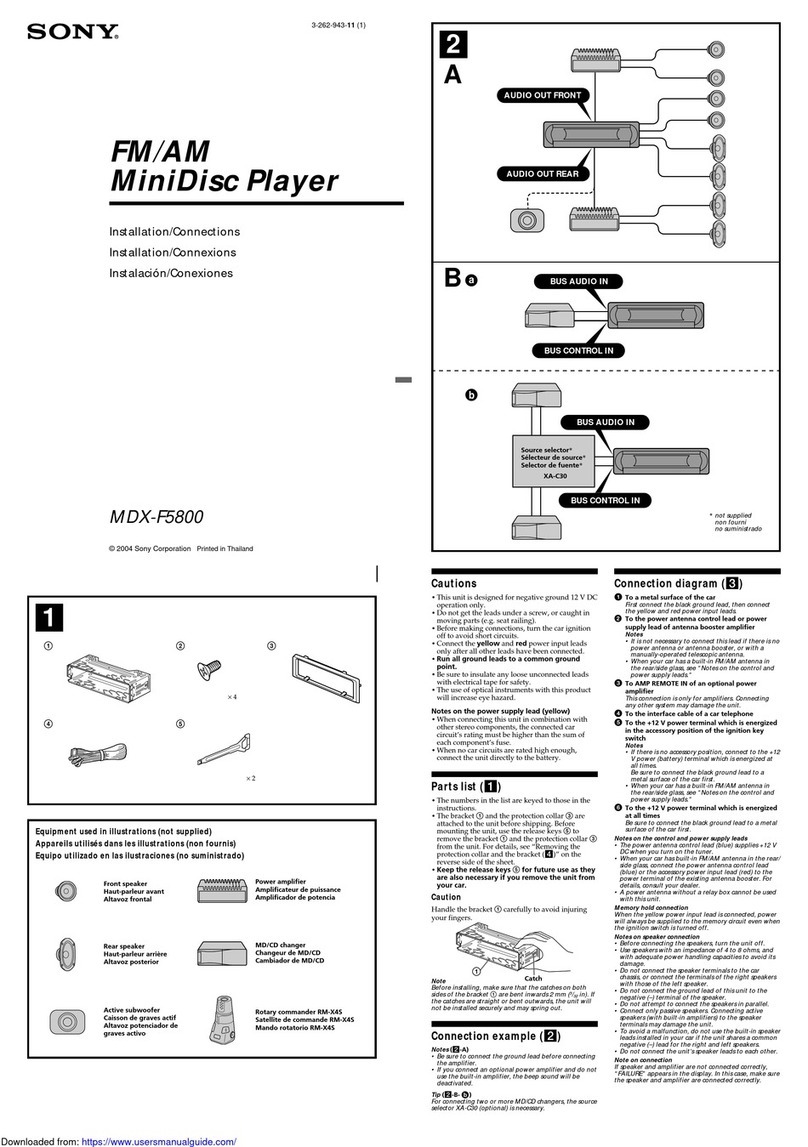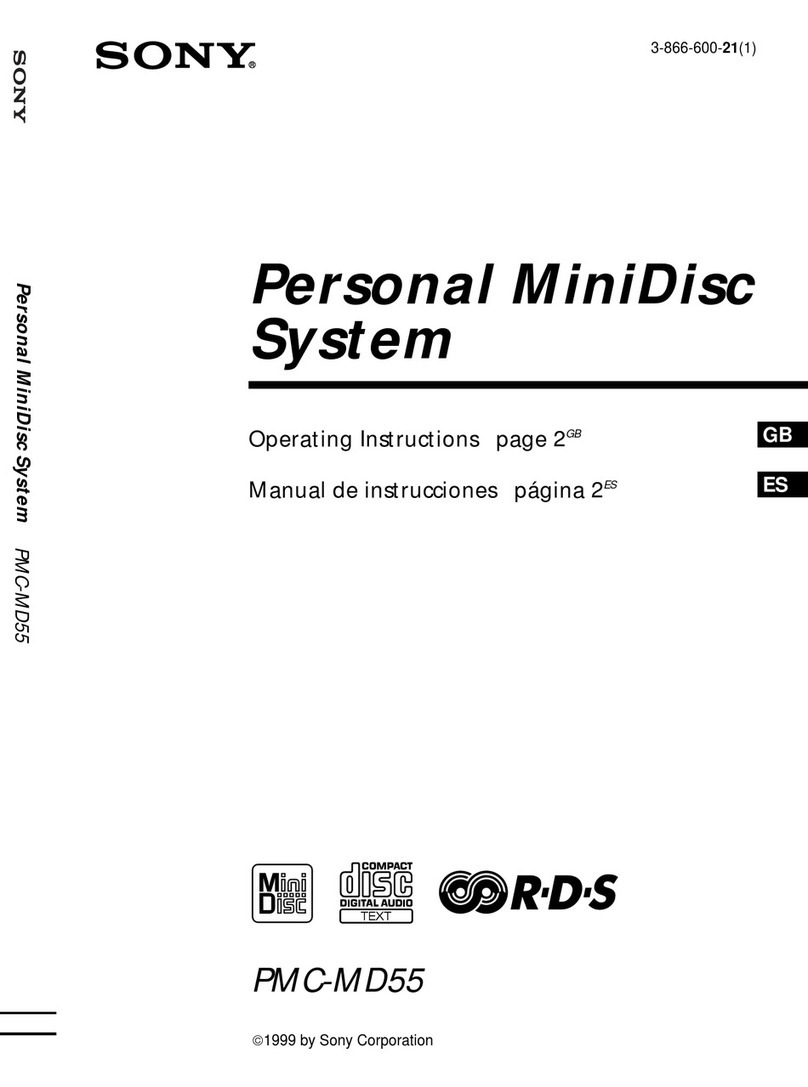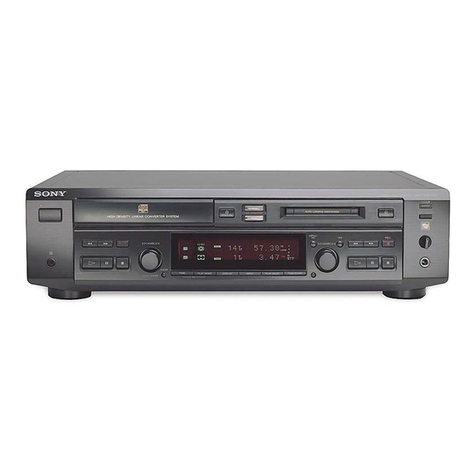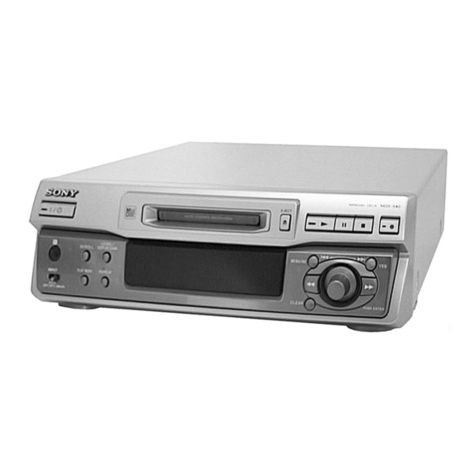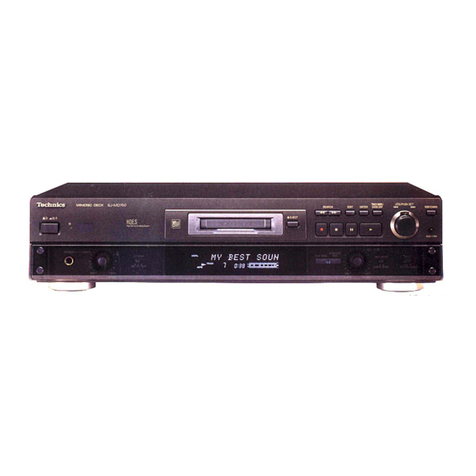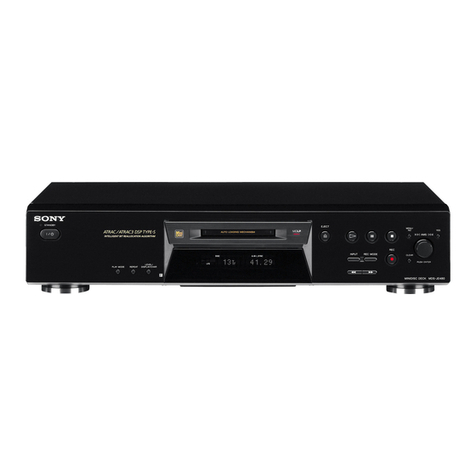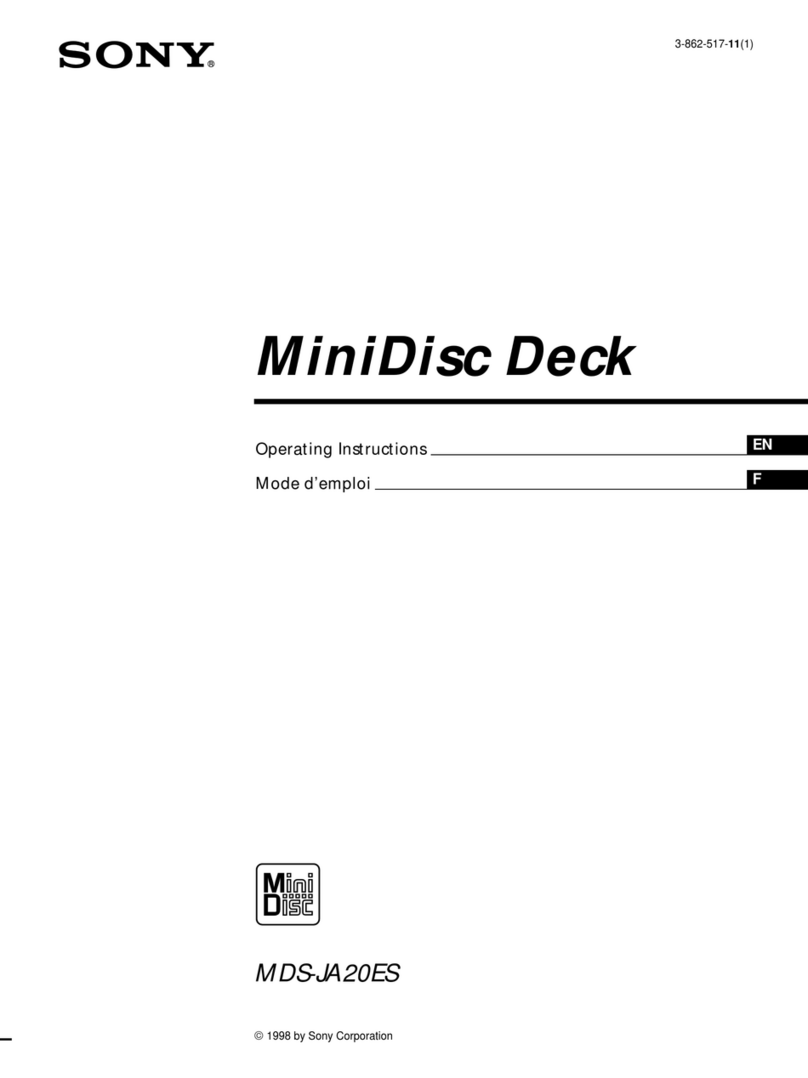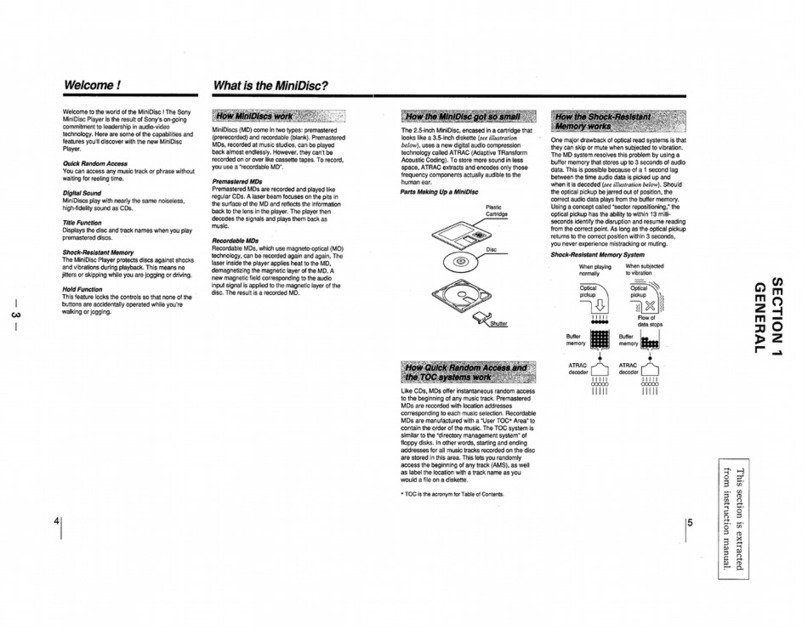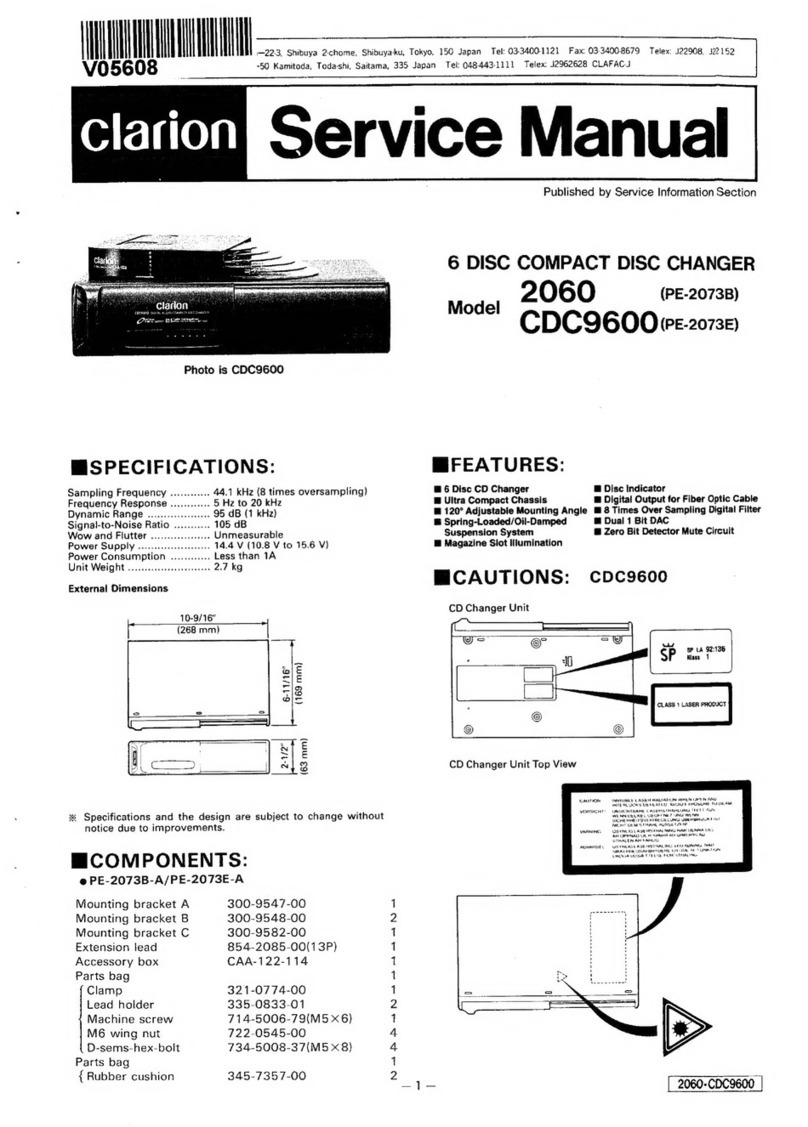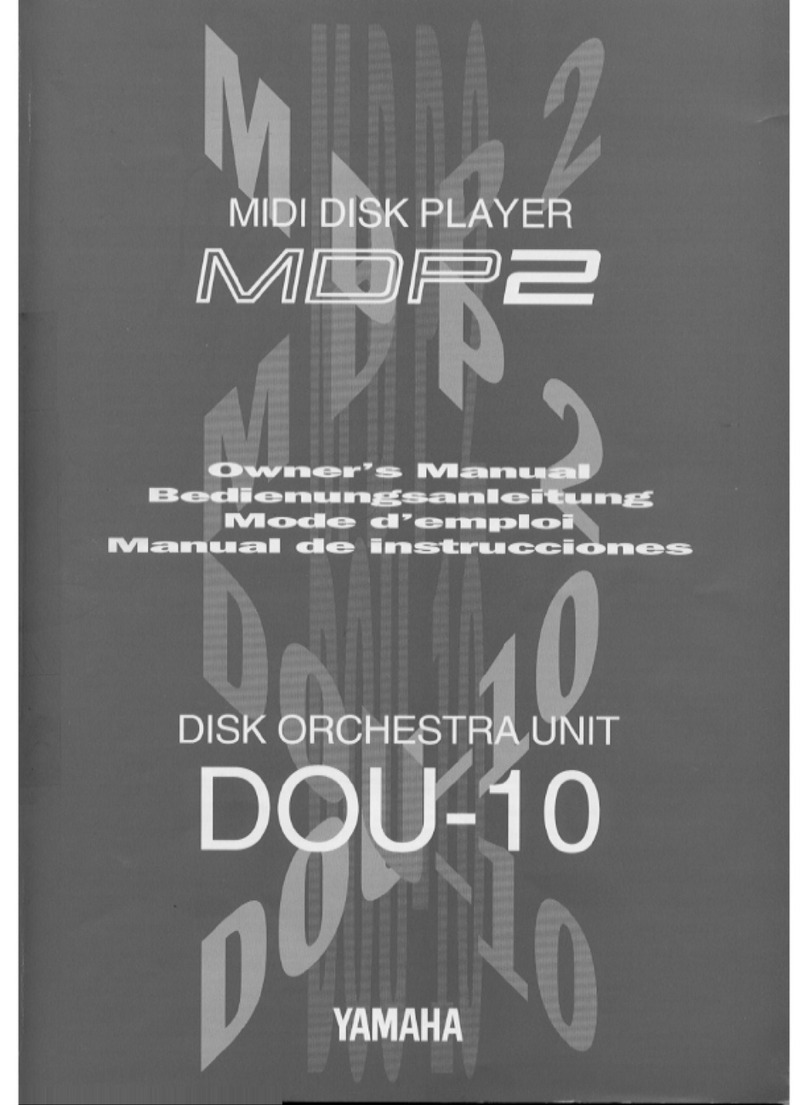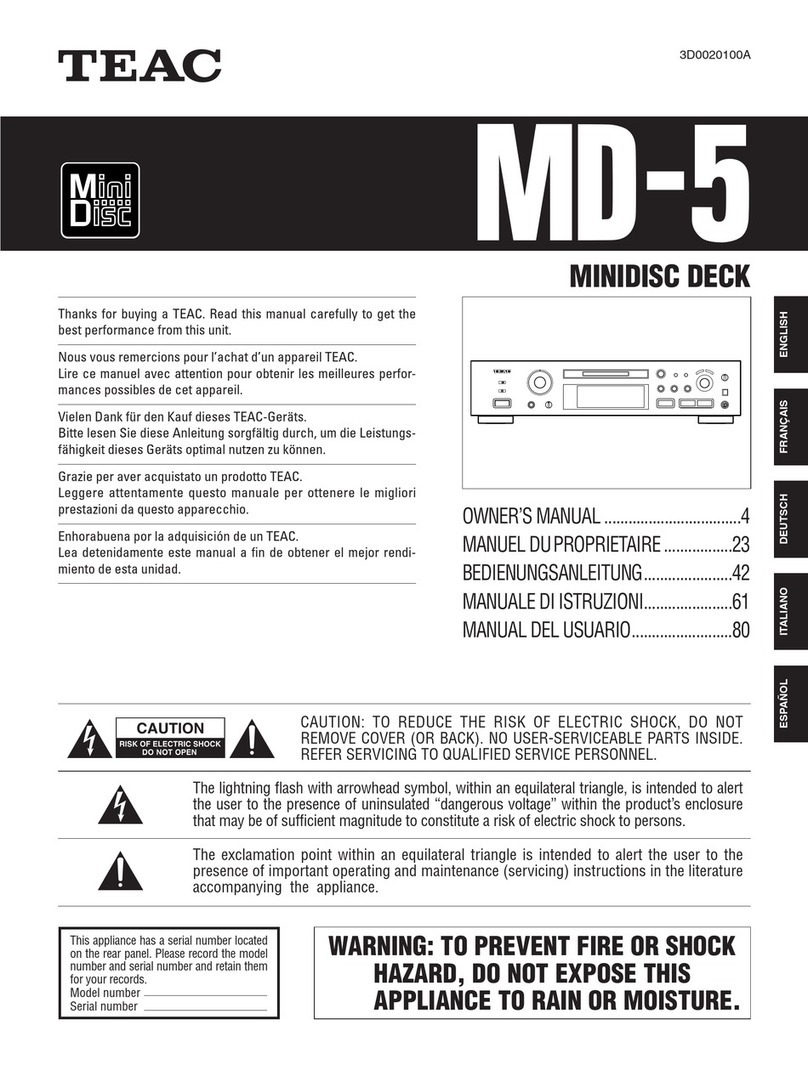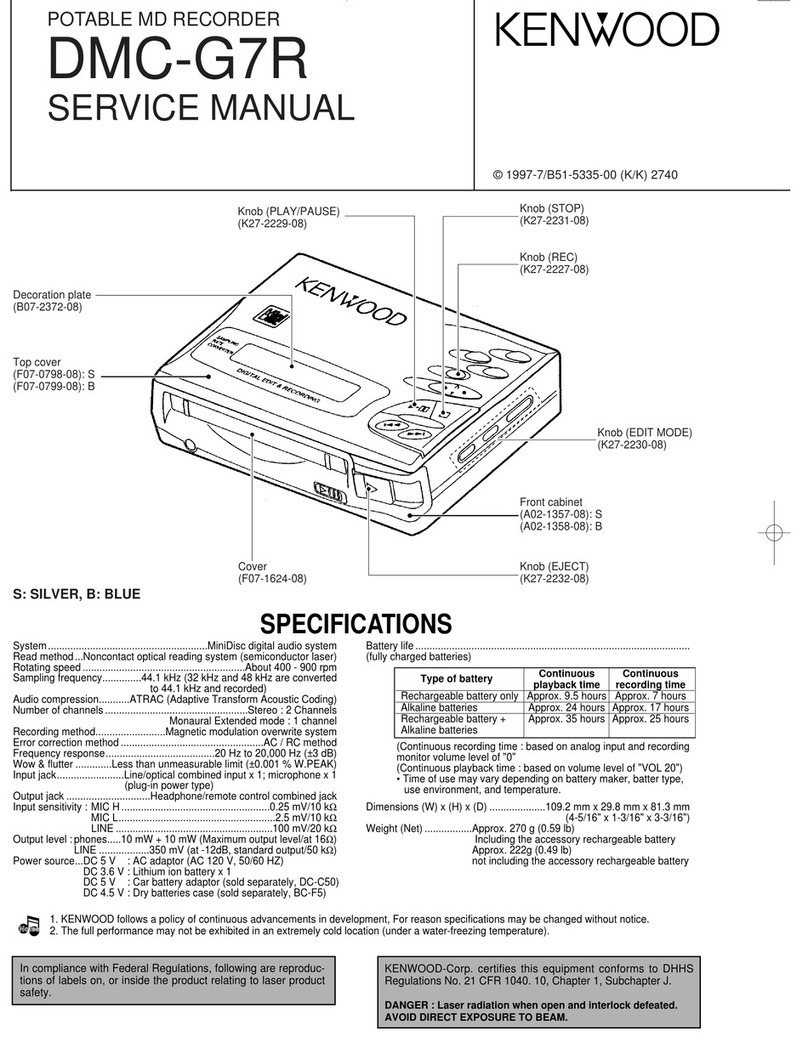2000 Matsushita Electric Industrial Co., Ltd. All rights reserved.
Unauthorized copying and distribution is a violation of law.
1. Note
Refer to the service manual for Model No. SE-HD515MD (ORDER No. AD0003056C2) for
information on Accessories and Packaging.
2. Blue LED
- The blue LED mounted to each sides of front panel is very
sensitive to static electricity. When handling the LED base plate,
be verycareful about it.
- Do not replace the blue LED byitself because it maybe subject to
electrostatic breakdown or deterioration in quality. When
replacing the LED base plate, be sure to replace L and R sides
simultaneouslyto adjust the brightness. For configuration at the
time of supplyof replacement parts, refer to Printed Circuit Board
Diagram.
3. Before Repair
This equipment (SJ-HD515), which is a component of the system, is supplied with power from
the Amplifier (SE-HD515MD) through the Tuner (ST-HD515MD). When repairing this equipment
or checking operation of the system, be sure to connect to the amplifier and tuner with it.
This equipment, even in the state of it as a single equipment, permits power supplyand
operation check. When operating it as a single equipment without the amplifier and tuner, refer
to the To Supply Power Source and Signal Check .
4. Handling Precautions for MD Unit
The laser diode in the MD unit (optical pickup) maybreak down due to potential difference
2

